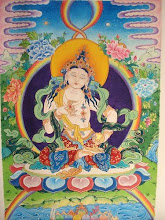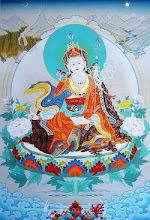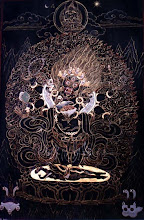 While this collection of 33 articles from the publishers at Shambhala features writing by some big names in Buddhism - the Dalai Lama, Pema Chodron, the Dzogchen Ponlop Rinpoche, Thich Nhat Hanh, Sakyong Mipham Rinpoche, Jon Kabat-Zinn - it's the pieces from the lesser knowns that seem most touching and insightful.
While this collection of 33 articles from the publishers at Shambhala features writing by some big names in Buddhism - the Dalai Lama, Pema Chodron, the Dzogchen Ponlop Rinpoche, Thich Nhat Hanh, Sakyong Mipham Rinpoche, Jon Kabat-Zinn - it's the pieces from the lesser knowns that seem most touching and insightful.George Crane relates the story of Ani Jinpa, a Western Buddhist nun taking care of street children in Mongolia, a pitifully thankless job miraculously infused with warmth and compassion. Psychologist John Welwood reminds us that in the search for perfect love, we begin and end with ourselves: "Bringing absolute love into human form involves learning to hold the impossibility of ourselves and others in the way the sky holds clouds - with gentle spaciousness and equanimity."
In a beautiful remembrance of her mother's painful process of dying, Mariana Caplan relates how both she and her mother learned to let go. In much the same way, Judith Toy finds the courage to live through her pain and to forgive the man who murdered her sister-in-law and two nephews.
Closer to the hearth, Nancy Hathaway describes the Four Noble Truths of Parenthood, while Norma Fisher shows how the practical, such as cutting vegetables and washing dishes, embodies the spiritual.
Order one of these for yourself, and order another for a friend who's interested in Buddhism.





























